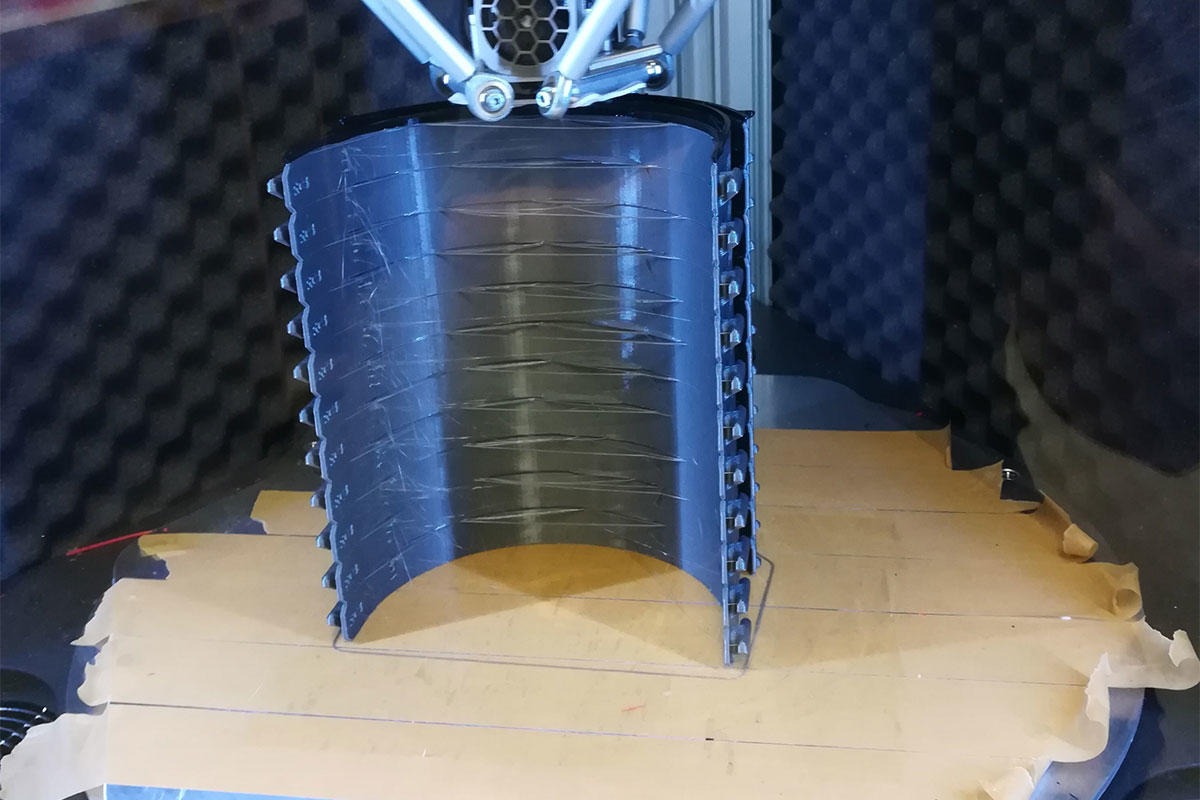SOE Designs and 3D-Prints Face Shields
Three-way collaboration responds to national need for protective equipment.
In parallel with ongoing efforts – the LAU Mobile Clinic and LAU Coronavirus Telecare – LAU has joined a new front in the battle against COVID-19: producing high-quality face shields to protect those working in high-risk areas. Mirroring the university’s drive to serve the community, this latest initiative hopes to alleviate a potential shortage in Personal Protective Equipment (PPE) in Lebanon.
From the very onset of the disease in the country, the LAU Medical Center-Rizk Hospital had sounded the alarm to ensure the nation-wide availability of PPE, driven by warning signs coming from other countries.
As a result, a three-way collaboration between the Gilbert and Rose-Marie Chagoury School of Medicine (SOM), the School of Engineering (SOE), and the medical center took off, led by SOM Clinical Professor and Division Head of Infectious Diseases Rola Husni-Samaha.
“Face shields were the fastest equipment to produce,” explained Dr. Husni-Samaha, adding that the prototypes produced at LAU were of a higher caliber than those they had been offered.
The design and production of the face shields were supervised by Associate Dean Michel Khoury, who is a professor in the Department of Industrial and Mechanical Engineering, while clinical professors and physicians from the SOM and the medical center actively engaged in providing feedback on prototypes.
Contributing to this agile response was the fact that “the pandemic had hit several countries before reaching Lebanon and we benefitted from the shared designs and experience of the 3D printing community worldwide,” said Dr. Khoury. After careful consideration, they settled on producing the “Prussa” mask as it was deemed the fastest to produce and met the medical center’s recommendations, and whose raw material was available in Lebanon.
The Engineering Labs and Research Center is equipped with five fused-deposit modeling 3D printers of three different sizes, as described by the Manufacturing Lab Coordinator Elias Mouarbes, which are suitable for prototyping but not mass production.
The printers were pushed to their limit, operating 24/7 to produce as many shields as possible, even with a reduced resolution “that cut down the time from 160 to 40 minutes per shield.”
The country’s closure and restricted access to campus posed another challenge. Mouarbes managed to secure the needed material and led the process at the lab, through design adjustments, assembly and packing. To reduce the risks of contamination, remote processes in design and printing were also used.
In terms of next steps, the SOE is looking to design and produce reusable shields. “We will use a special kind of resin to coat the shields, eliminate any porosity and accordingly make re-sanitizing possible,” clarified Dr. Khoury.
Most recently, LAU’s Protection Office had approached the SOE requesting face shields for the university’s security guards, who work in high-traffic areas, especially as the university has entered the first phase of gradual reopening to staff.
